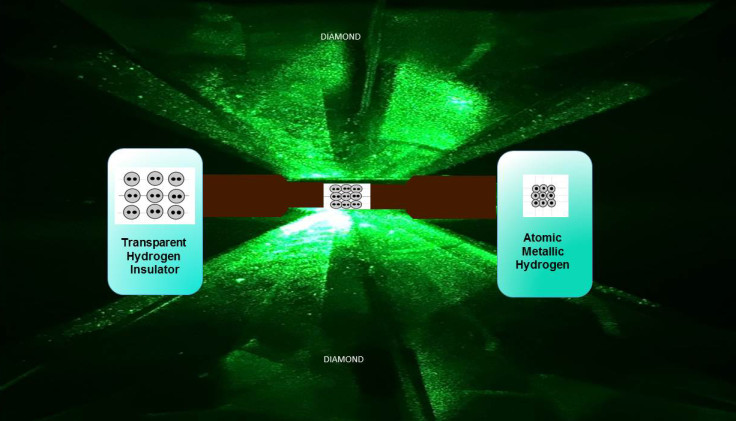World's only sample of 'holy grail' metallic hydrogen lost in laboratory mishap
Planet's rarest and most valuable metal was tipped to transform modern technology.
A piece of rare metal, poised to revolutionise modern technology and take humans into deep space, has been lost in a laboratory mishap. The first and only sample of metallic hydrogen ever created on earth was the rarest material on the planet when it was developed by Harvard scientists in January this year, and had been dubbed "the holy grail of high pressure physics".
The metal was created by subjecting liquid hydrogen to pressures greater that those at the centre of the Earth. At this point, the molecular hydrogen breaks down and becomes an atomic solid.
Scientists theorised that metallic hydrogen – when used as a superconductor – could have a transformative effect on modern electronics and revolutionise medicine, energy and transportation, as well as herald in a new age of consumer gadgets.
One of the metal's hypothetical uses is as a new and more powerful rocket propellant that could allow humans to explore space beyond what we can reach with conventional technology.
Sadly, an attempt to study the properties of metallic hydrogen appears to have ended in catastrophe after one of the two diamonds being used like a vice to hold the tiny sample was obliterated.
The metal was being held between two diamonds at a pressure of around 71.7 million pounds per square inch – more than a third greater than at the Earth's core. According to The Independent, one of these diamonds shattered while the sample was being measured with a laser, and the metal was lost in the process.
Professor Isaac Silvera, who was leading the research on the material, recalled hearing a small clicking noise before realising the magnitude of what had happened. "I've never seen a diamond shatter like that. It was so powdered on the surface, it looked like baking soda or something like that," he said.

Atomic cock-up
Due to its size – about a fifth the diameter of a strand of human hair — attempts to locate the sample have been unsuccessful, leading the Silvera and his team to speculate that it may have become embedded in the equipment, lying somewhere in the lab or simply evaporated upon being released from pressure. "The sample is in the wreckage some place or it's not meta-stable and it disappeared, it turned into a gas," he said.
Silvera had been due to discuss his research on metallic hydrogen with the American Physical Society in the coming weeks. All is not lost as his team plans to create a second sample by recreating the original experiment.
"We've got a pair of diamonds that we are now preparing for a run," he said. "There were a few doubting Thomases, so we decided we should just reproduce it."
Sceptics have suggested the metal was never created to begin with, and that aluminium used to protect the diamonds from the hydrogen may have produced a false result. Silvera said he was aware that previous claims of the material having been created had since been refuted, yet remained "completely confident" in his own findings.
© Copyright IBTimes 2025. All rights reserved.





















